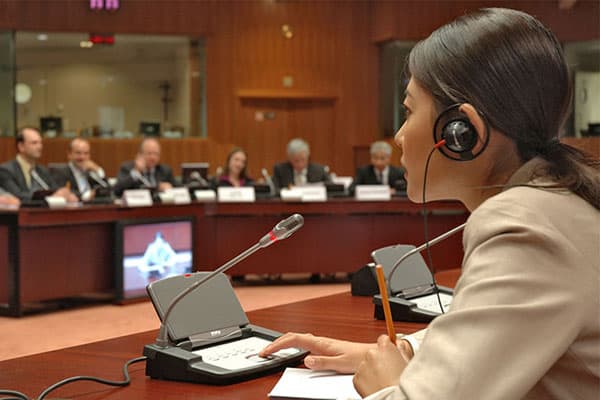Since it’s impossible to conduct business without being able to communication accurately, the type of equipment interpreters use is vital to the success of any meeting where different languages are spoken. The interpreter’s ability to hear and understand what the speaker is saying and then to relay the messages without disruptions will play a major role in the success of any meeting.
Simultaneous interpreting equipment is the main type of equipment used in everything from small business meetings to large International conferences. The exact type of simultaneous interpreting equipment you’ll need will depend on the type of business you have and the type of meetings you’re attending but the most common are discussed below.
Soundproof Booths
Interpreters need soundproof booths that meet ISO and EU standards so they can do their job efficiently. The booths are placed in an inconspicuous area near the back of the building or if necessary, in an adjoining room depending on the size of the building and the number of people attending.
If the interpreter can’t see the speaker directly, monitors with a clear view of the speaker linked to each interpreter should be available. The booths should also be large enough to hold two interpreters comfortably and having one booth for each language spoken is necessary.
Transmission System, Microphones and Headsets
The transmission system is set up to transmit all correspondences that take place between the speakers and the interpreters. The two main types of systems used are the infrared (IR) and the radio frequency (RF). The infrared system uses electromagnetic radiation that has a shorter range than radio waves and it’s immune to radio interference. It’s normally used where security is a main concern due to its restrictive transmission range.
FM radio frequency systems are the most popular partly because of their long transmission range and partly because they are much easier to set up and use than the infrared systems. They come in several frequencies but the 72 MHz and 216 MHz are the most commonly used for interpretation. Radio frequency systems have excellent long-range transmissions and they’re very reliable.
At the conference, each language is set up on a separate channel or frequency to maintain a clear line of communication. In addition, good quality microphones and headsets are necessary to reduce outside noises that can cause distractions.
General Information about Simultaneous Interpreting Equipment
Tour guides and similar professions use portable simultaneous interpreting equipment that allows them to do their jobs while on the go. This type of equipment normally consists of a transmitter, headset and two microphones neatly packed away in an easy to carry case, making it convenient and efficient.
Those in charge of handling the interpreting equipment for any conference should also hire a technician. When it comes to electronics, you never know when something might go wrong and when it does, you’ll need someone on the premises to handle the problem in a fast and efficient manner.
When you use quality simultaneous interpreting equipment for all your meetings and conferences, you can rest assured you’ll have accurate communications. It’s the first step in extending your marketing efforts to foreign clients and to accomplishing your long-term goals.


